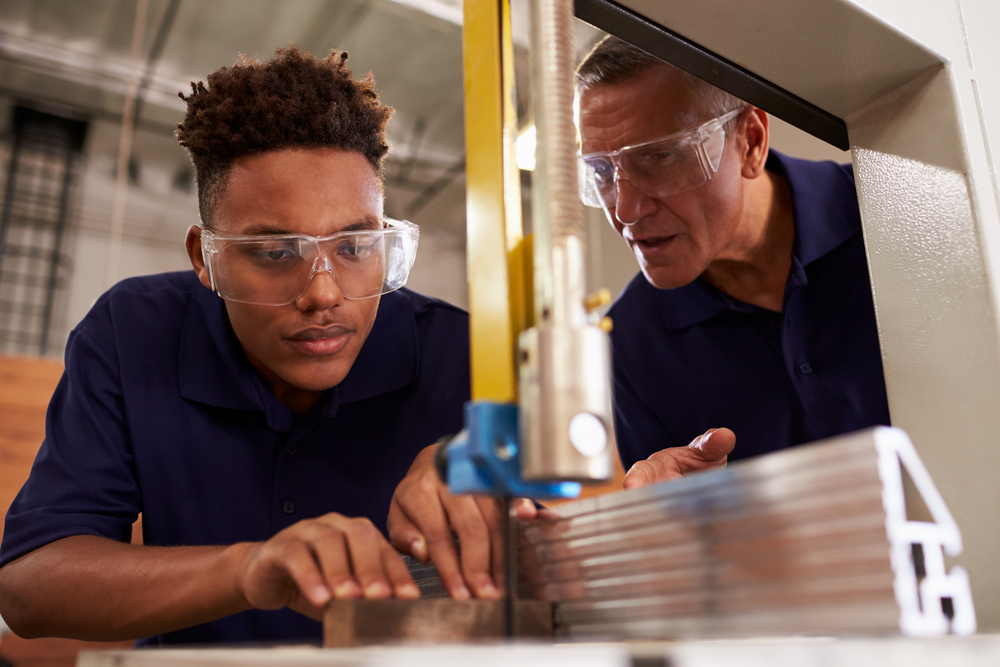
AAM’s president takes stock of what we’ve done well — and what we still need to do.
The article below originally was posted on Medium.
This Manufacturing Day post is for all the dreamers out there. For the young men and women who will imagine and invent things that will make the world a better place. And for the folks who will make those incredible things right here in America.
These dreamers will join a long line of change-makers. As a nation, we’ve always risen to the challenge to make a better future for the next generation, although we often take a step or two back before getting it right. As we honor our nation’s makers — past, present, and future — it’s important to take stock of what we’ve done well, and where we need to make some changes.
Think of the Rosie the Riveters who built the indefatigable Arsenal of Democracy, but were forced from work after World War II — and whose daughters and granddaughters still face entirely too much unequal pay,discrimination, and harassment. Nevertheless, CEOs such as General Motors’Mary Barra, female entrepreneurs who launch start-up manufacturers, and a new surge of women embracing the age of digital manufacturing hint at the possibilities (if policies and practices change).
Or think of the Black steelworkers who spent decades fighting for opportunity and equality, only to achieve a taste of it just as their mills were shuttered by a lethal combination of imports and advances in automation beginning in the 1970s. Their sons and daughters still reel from instances of police violence, discrimination, and horrors, like the white supremacists we all witnessed in Charlottesville just a few weeks ago. But when I see programs like Austin Career and College Academy on the West Side of Chicago and Focus: HOPE in Detroit, I see a glimpse of the future (if we can just get it right).
And think of the proud factory workers who, over the course of our nation’s history, built the world’s largest and most innovative manufacturing economy, only to see it outsourced, devalued, and held hostage to a philosophy that placed a premium on cheap consumer goods at the expense of good, stable, middle class jobs.
The consequence of that job loss has rippled through millions of workers’ lives and thousands of communities. It has even altered our life expectancy rates, our marital rates, and, of course, our politics. It’s more than an economic side effect. Deindustrialization has led America down a dead-end alley from which we’ve yet to emerge.
Still, some amazing entrepreneurs are still betting on making things in America, and we’ve managed to add back 1 million manufacturing jobs since the Great Recession, so all is not yet lost.
When some manufacturers grumble about not being able to find skilled workers, wondering why young people can’t see job opportunities right in front of them, I have to bite my tongue. These folks often assume it’s the inaccurate image of manufacturing as dirty and dangerous that’s keeping those doors shut, or perhaps the next generation doesn’t want to work hard.
I don’t want to minimize the challenges we face in replacing a rapidly retiring factory workforce, or developing talent within an educational system that for decades squeezed out technical training before realizing that was a mistake. There’s a lot of important work to do here.
These kids — these dreamers — are woke. Now more than ever, job applicants want to know the values of the men and women they’ll be working for. How did their employers respond to these challenges I’ve mentioned? And how will they invest in developing the skills and careers of their workers?
Manufacturing Day should be a two-way street.
Even in an age of automation and globalization, there are a lot of reasons to think that millions more Americans can be working in manufacturing over the next decade. We have a strong energy advantage. We have a robust consumer market. We have an entrepreneurial culture. While more robots will be found on factory floors, the industry is already highly automated. With new products, more market share, and sharpened skills, we can create more factory jobs. With the right mindsets in the public and private sectors, we can guarantee that the next generation of really amazing things can be made right here.
So keep dreaming, young dreamers. But remember to keep your eyes wide open while you do. Happy Manufacturing Day — now let’s go make something together.
